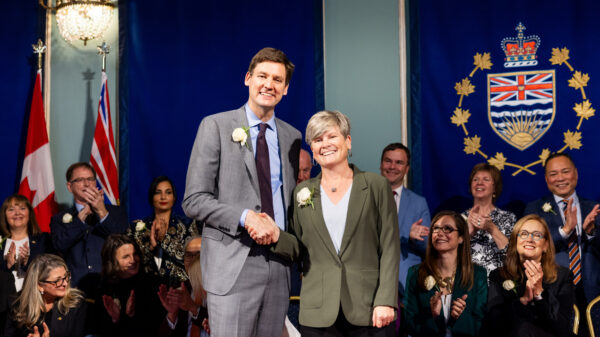 Japanese Hall, Alexander Street
Japanese Hall, Alexander Street
On Wednesday, Friday, and Saturday this past week over a hundred people spoke at City Hall while city council deliberated over the Downtown Eastside local area plan. Most of them were residents of the neighborhood speaking to the importance and value of their community. In this series, we’ll feature those powerful and moving speeches heard within the halls of power. For three days residents and supporters agitated against elements of the plan that put forward tenant relocation and widespread displacement by the free market. These speeches – some scathing, some emboldening, all informative – belong to the community. The authors have kindly allowed us to re-publish their words. If you have a speech that you want to share with us, email us at mainlander.hub@gmail.com –
Julia Aoki
DTES Local Area Plan, Public Hearing
Friday, March 14th
Hello, my name is Julia Aoki and I would like to recognize that we are on unceded Musqueam, Tsleil-Waututh, and Squamish First Nations territory. I am a PhD candidate in the School of Communication at SFU, a long-time volunteer, and former interim general manager of the Powell Street Festival Society that is held in Oppenheimer Park each year, and for some time (though no longer) I sat on the Oppenheimer Park Commemorative Task Force. I am here speaking on my own behalf.
I would like to start by thanking the representatives of the Downtown Eastside Local Area Planning Process Committee and those who continued to work outside of the structure of the committee for their many hours of work and their tremendous and continuing effort in representing the needs of their communities throughout this process. Particularly, I want to thank those representing low-income and vulnerable citizens, and all other groups and communities that have historically been systemically socially, politically, and economically marginalized, and underrepresented in processes such as these.
There are broad descriptions and statistics included in the plan that paint a stark picture, in terms of median income, health, security, and of course housing. What they don’t do is provide social historical context, such as long-term public and private disinvestment, progressive waves of privatization and the dismantling of social welfare supports – in other words, these descriptions don’t capture the social production of poverty and marginalization. Elsewhere the report indicates that development of the area, as we all know, affects affordability, access, employment opportunities, and various aspects of residents’ well-being. But again, social historical context is bracketed out.
The appeal of the neighbourhood to developers is directly related to disinvestment in those communities, because it presents the largest rent-gap, in the language of the late geographer Neil Smith, between current and speculated future land values. What might be construed as nothing but a ‘denominator issue’ is a socially produced gap in value. Perhaps this context can serve as a reminder that, when the report refers broadly to a “diversity of voices”, this cannot be applied a-historically, and that we cannot approach diversity as though all things are equal.
Given this context, and that developers have much to gain, and have the means for extracting land value at the expense of, and off the backs of, current, low-income residents, I’ll express my support for the Plan’s 60% social housing and the no-condo zone in the Oppenheimer District.
But I would also like to ask that you make this split mean something, by rejecting text amendments in various by-laws to update the definition of social housing. Define social housing in a way that does not discriminate against people on social assistance and basic pension. Define social housing in a way that will benefit those with housing needs – a somewhat absurd thing to have to fight for.
I am also deeply worried about the language of the ‘creative economy.’ In section 14 of the LAP, ‘Increased opportunity for the creative economy’ is shown on a flow chart, along with ‘improved arts and culture facilities’ and ‘art in public places.’ The latter two are addressed in some detail in the remainder of the arts and culture section of the LAP. No such treatment is made of ‘creative economies.’ I have not seen concrete recommendations on how this would be implemented, but I express my skepticism insofar as the definition in the 2008 Culture Plan of ‘creative economies’ are those “local industries which have their origin in individual creativity, skill and talent, and which create wealth through the commercialization of their intellectual property.” In other words, ‘creative economies’ indicates a commercial view of creative activity.
‘Creative economies’ thus captures a far broader range of activities than those normally associated with arts and culture – they can capture high tech industries, game production, fashion and architecture. Please do not take an approach that uses community, non-profit arts and cultural production, as an alibi for investing in ‘creative industries’ that are not accessible to, and do not benefit, the existing low-income community. This is an area of the plan that needs explicit definition and policy recommendations so they can be properly debated.
I am also against the language in the Manager’s report and summary that compounds the revitalization of Japantown as a retail centre with support of the neighbourhood’s “unique heritage character.” Besides the threat of retail gentrification that it poses, there are a number of non-profit organizations better able and suited to protecting and promoting the heritage of the Japantown area than commercial retailers. As you know, Japanese Canadians were dispossessed and interned based on racist policy during WWII – I can think of no worse way to reflect on that history and the resulting significant absence of a Japanese Canadian community than to create a commercial spectacle.
Thank you for listening. I wanted to talk to Mr. Robertson directly about this, but I couldn’t afford the $25,000 ticket.














